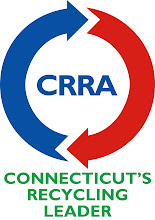That’s Italian for “not in my back yard.”
You may have noticed stories about a trash crisis in Naples, Italy, where garbage has been piling up on the streets because there was no place to dispose of it. The Associated Press reported on Jan. 6:
“Naples and other parts of the southern Campagna region have been plagued by a series of garbage crises for more than a decade. Dumps fill up and local communities block efforts to build new ones or create temporary storage sites . . . angry residents in the Pianura neighborhood blocked a street to protest the reopening of a long-closed dump.”
And on Jan. 8, the AP reported:
“Residents are updet by the uncollected trash but have blocked plans to create new dumps or reopen old sites, claiming health risks.”
Evidently, Italy has the same problem Connecticut has: everyone makes trash but nobody wants to give it a final resting place. Here in Connecticut, there hasn’t been any new disposal facility built in 10 years, even though we continue to produce more and more garbage.
As recently as 1997, Connecticut was bringing in trash from other states to fill its six waste-to-energy plants, but today we have to send more than 400,000 tons a year out of state because our plants have no more capacity.
The Italian government is faced with the same challenge, and Italian leaders appear to be ready to take the same steps Connecticut needs to take. Here’s more from the Jan. 8 AP dispatch:
“[Premier Romano] Prodi announced emergency and long-term measures to cope with the crisis, saying the objective of the strategy was to ‘make Italy completely self-sufficient in terms of garbage disposal, avoiding exportation.’ He said the area would get three new incinerators . . . Environment Minister Antonio Pecoraro Scanio has indicated that recycling and building technologically advanced incinerators are the only ways to help escape the mob’s hold on Naples’ garbage.”
As the Italians are now advocating, Connecticut has long used a system of recycling combined with trash-to-energy plants using state-of-the-art environmental controls (check the results of our emissions tests here) to dispose of its waste. Our system reduces by 90 percent the volume of material that must be landfilled and, despite the claims of some so-called “environmentalists” based on junk science and scare tactics, our system is the most environmentally-friendly cost-effective means of managing our trash.
You can get the facts about the trash-to-energy system on the CRRA Web site. Our Web site has lots of other information about trash, recycling and how we protect the environment.
Subscribe to:
Post Comments (Atom)

No comments:
Post a Comment